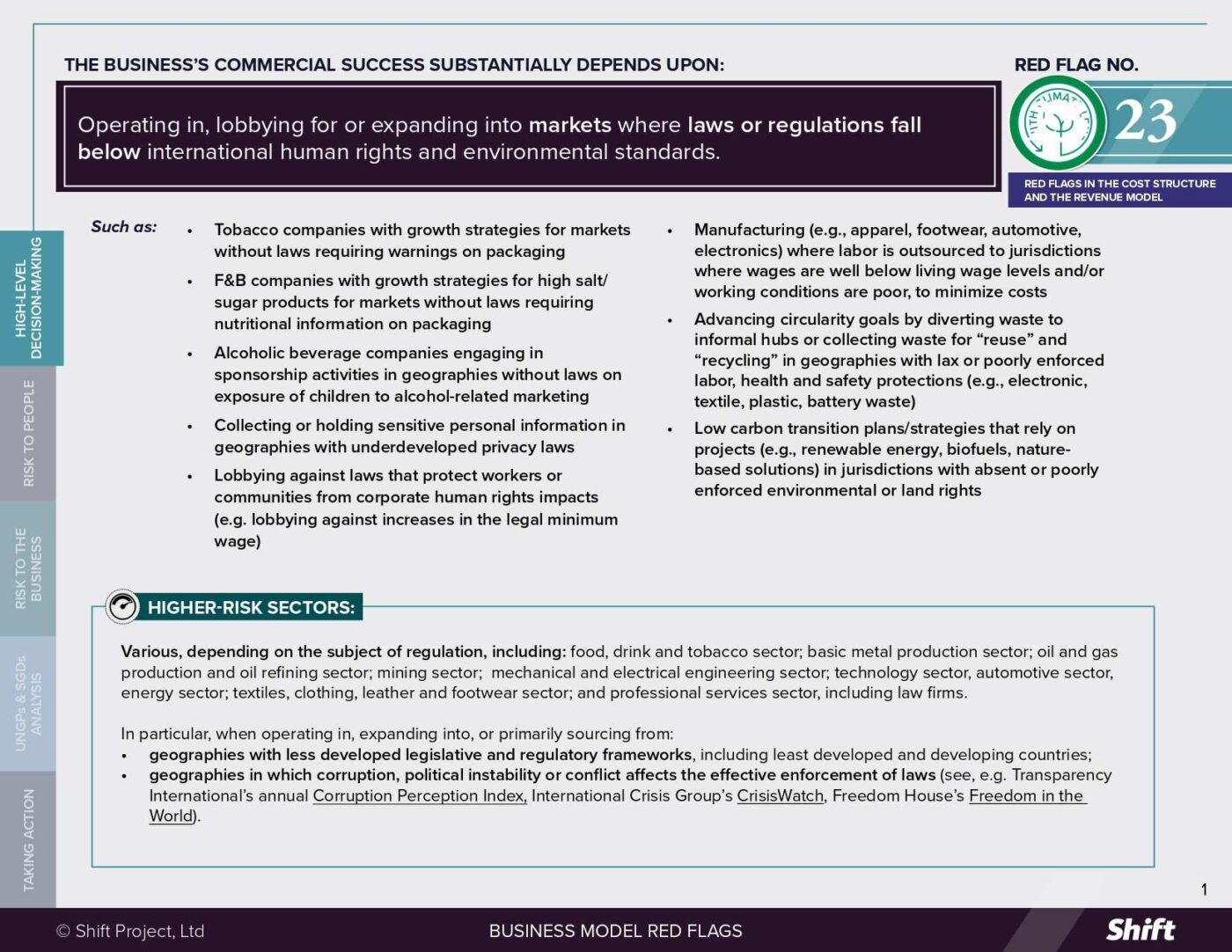Supply chain human rights issues continue to make the headlines. Even in industries like apparel, it seems we are far from solutions despite significant investments to address systemic supply chain human rights issues since the 1990s.
Technological trends suggest that in the next several years we will enter an age of “hyper-transparency” in upstream and downstream supply chains with lower cost technologies like smart phones creating new communication platforms for workers and communities in the global south.
This brave new world is empowering to some stakeholders and creates much needed transparency and thus accountability. However, it may be of concern others. New engagement processes will be required as information loops exponentially picks up pace and brands lose control of their message and engagement strategies. In response to this evolution, every corporate apparel executive should be asking themselves the following questions:
- What is the story behind our product or service?
- Are we proud of that story?
- Would my customer be proud of that story?
- Do we own the story or do others own it for us?
Addressing supply chain human rights issues is not easy and in fairness there is still a large number of “free riders” in the industry that invest little or nothing in ethical trade. However, there is much to be learned from the mistakes of the past and opportunities to leverage that learning.
The industry’s approach to addressing these issues has come in a number of “acts” in what might be seen as an evolving play. With each act comes learning about what has not worked and understanding for how the script should be developed. Companies need to keep evolving along with the unfolding narrative.
Act One: Codes and Auditing
Brands have been at the auditing cat and mouse game for the past fifteen years and some brands like Levi’s even longer. In 1991, Levi’s was the first company to establish comprehensive Global Sourcing & Operating Guidelines.
While these efforts are welcome, their impact on the factory floors, farms and mines of global supply chains has largely been ineffective, while creating duplication. | See our report on company experiences going “beyond auditing”
Numerous studies have highlighted the limited effectiveness of code implementation and social auditing. Most studies looking at the first tier of supply chains in the garment industry agree that basic health and safety has generally improved and child labor is no longer an issue. Sadly, very little progress has been achieved on issues like non-discrimination, freedom of association/collective bargaining and excessive working hours.
And in some cases working conditions may have actually worsened over time. Bangladesh is a case in point, where there are over 4,500 garment-producing factories that employ 3.4 million mainly young female workers, and where most of the major Western brands source product, attracted by low labor costs.
Since November 2012, 28 factory fires have been reported in Bangladesh. In the last five years, there have been over 600 worker deaths related to fire safety and structural collapses – a system failure. In some of the recent fire-related tragedies social auditors overlooked basic fire safety problems, including too few emergency exits and lack of automatic fire prevention systems.
There have been attempts to improve ethical trade practice including additional skills training for social auditors, code of conduct alignment, and sharing audits to reduce audit fatigue and free up resources for other interventions. However, the harsh reality is they are all dependent upon a largely broken monitoring system.
Act Two: Towards Collaboration
Some brands realized over time that individual efforts and monitoring were ineffective and that in order to drive scalable, effective change to complex and seemingly intractable challenges there was a need for new approaches including strategic collaboration and engagement.
As a result, membership in multistakeholder initiatives grew in order to leverage the expertise, experience and resources of multiple stakeholders. This has produced some positive outcomes, such as UK legislation protecting vulnerable workers, and increased engagement with local NGOs and trade unions in developing countries. However, the jury is still out on the cumulative impact that these initiatives will have in the coming years.
Brands also learned that training at the supplier level was important. Brands either independently or in partnership with other stakeholders launched training programs in various areas including worker rights and responsibilities, labor law, health and safety, management systems development, supervisory skills training, worker and management dialogue and productivity enhancements.
While these trainings do target key needs in suppliers they have largely failed to reach scale and sustain themselves over time. Like the code fatigue mentioned earlier, the industry is beginning to face “training fatigue.”
Act Three: Responsible Lobby
While still an emerging area, there is a tremendous opportunity for brands to engage collectively with governments and/or international organizations on expectations related to human rights. They have a shared interest in a level playing field, rule of law, remedy processes and developing competent and resourced labor inspectorates.
Many governments feel if they enforce all their labor and environmental laws then the brands will leave due to the increased costs of compliance. Yet price is not the only consideration in sourcing decisions. Brands also factor into the equation supply chain stability, good infrastructure, quality, skills and innovation. Some have taken the step of making clear that they welcome the effective enforcement of labor and environmental standards, as this provides greater predictability and less risk for their business.
However, while there have been some admirable one-off efforts to develop responsible lobby platforms these have generally not gained traction. A couple of examples include:
- In Mexico, where the Maquiladora Solidarity Network, a Canadian based advocacy group, worked collectively with global brands to pressure Mexican state governors to intervene and protect human rights, leading to positive outcomes for those affected.
- The Uzbekistan Cotton Coalition made up of brands, NGOs, responsible investors and trade unions that have been collectively lobbying the Uzbek government and the International Labor Organization to intervene and put an end to the government-mandated practice of forced child labor in the Uzbek cotton fields.
Brands can play an important role in sending a clear, unified message to national governments about their concerns regarding human rights protections, leveraging the role they play in providing employment opportunities and economic development.
Act Four: Responsibility Defined
A positive development that defines the responsibility of brands and their suppliers in relation to human rights are the United Nations Guiding Principles on Business and Human Rights.
In June 2011, the United Nations Human Rights Council unanimously endorsed the Guiding Principles. The principles enjoy wide support from business, civil society and governments.
Former Special Representative to the Secretary-General, Professor Ruggie proclaimed, “The UN Guiding Principles will not bring all human rights challenges to an end, but their endorsement marks the end of the beginning. The principles provide a solid and practical foundation on which more learning and good practice can be built.”
The principles outline the corporate responsibility to respect human rights. In order to meet their responsibility to respect human rights, business enterprises should have in place policies and processes appropriate to their size and circumstances, including:
- A policy commitment to meet their responsibility to respect human rights;
- A human rights due diligence process to identify, prevent, mitigate and account for how they address their impacts on human rights;
- Processes to enable the remediation of any adverse human rights impacts they cause or to which they contribute.
The Guiding Principles can play an important role in reducing duplication, framing responsibility boundaries and roles, and setting expectations for business, including both brands and their suppliers by:
- Distinguishing between the roles and responsibilities of global brands, their suppliers and the governments of the states where they operate;
- Emphasizing the notion of human rights due diligence through which companies should anticipate and mitigate risks;
- Ensuring that companies have put in place effective remediation processes to address grievances;
- Reducing the potential for “free riders” in the system.
Curtain Call: Purchasing Practice and Business Integration
Any solution to supply chain human rights issues will be multifaceted and require brands to look into the mirror to assess how their own purchasing practices may be a part of the problem. The Guiding Principles require that a company looks at how their own activities may contribute to human rights impacts through their business relationships as part of their responsibility to respect human rights.
Brands should therefore determine if their own purchasing practices are undermining the monitoring efforts of their internal compliance teams or their external auditors.
They should consider making a “deep-dive” assessment of their product pricing, supplier capacity, product lead times, ship dates, product changes and critical path management to determine ways to improve in order to take unnecessary pressure off suppliers and the workers they employ.
Director’s Corner
There are no silver bullets, but there are some practical steps that can be taken to address the pressures that underlie purchasing practices.
- Developing longer-term, trust-based relationships between retailers and suppliers that send a signal to suppliers that the brand is investing in them and will be around next season.
- Developing financial incentives for suppliers, rewarding them for transparency and compliance.
- Appropriate product pricing. Retailers should set product pricing that a factory can realistically meet without subcontracting and have the technical capacity to question when pricing is “too good to be true.”
- Launching new communications technologies like LaborVoices that use mobile phone text and voice messaging to enable workers, NGOs, trade unions and communities to alert retailers and others to unauthorised subcontracting or other abuses.
- Greater communication between retailer compliance and design divisions to make sure the compliance consequences of design changes are understood.
- Improved systems to measure supplier’s production capacity.
- Recalibrating buyer performance evaluations to include labour standards performance and not just metrics for quality, price and speed of delivery.
Until apparel brands take responsibility for their own purchasing practices, monitoring and auditing will continue to be a cat and mouse game with little or no positive impact and a great deal of wasted resources.
Brands and suppliers need to take a hard look at current buyer purchasing models and take mutual responsibility to ensure that workers making their products are treated with dignity and respect as part of their responsibility under the Guiding Principles.
So ask yourself again:
- What is the story behind your product or service?
- Are you proud of that story?
- Would your customer be proud of the story?
- Do you own the story or do others own it for you?
Sean Ansett is the Founder of At Stake Advisors, a supply chain sustainability and strategy consulting group based in London. He has over 15 years working on supply chain human rights issues and was formally the Director of Global Partnerships at Gap Inc., and the Director of Corporate Responsibility at Burberry.



